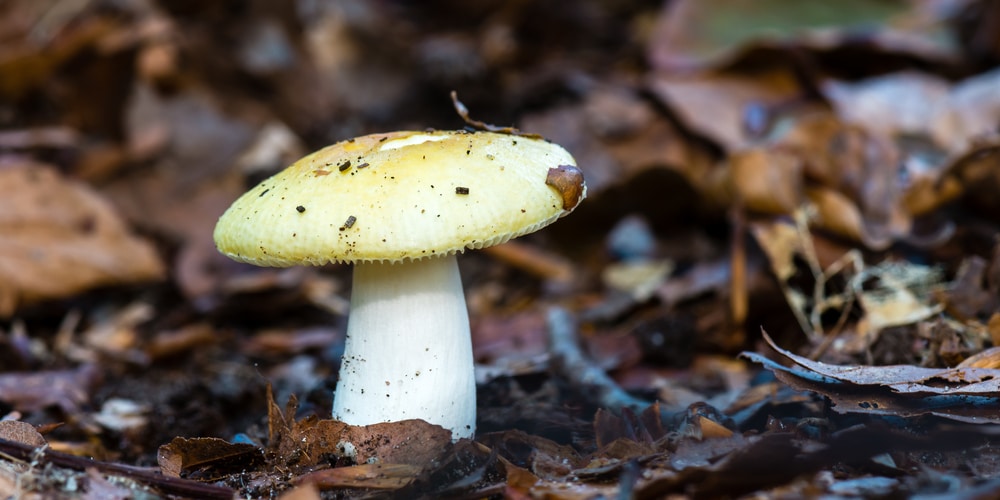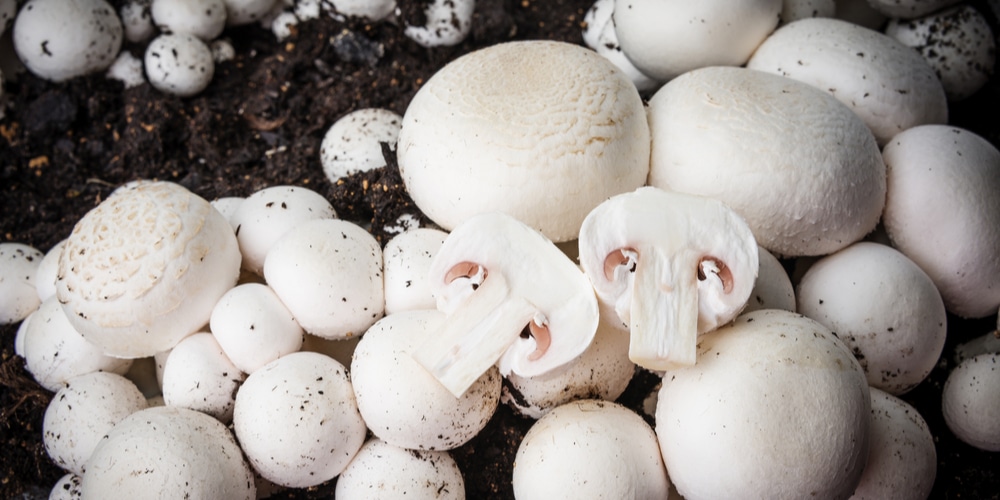‘Do mushrooms grow in swamps?’ is a typical question most people would ask when they’re out foraging for edibles. On the surface, it’s likely that you’ll see fungi on wetlands and marshes since they contain all the elements needed for mushroom growth.
Although it’s true that there’s such a thing as ‘swamp mushrooms’, you won’t typically find edible or human-grade mushrooms such as morels near swampy areas. The primary reason is that there’s not enough nutrients and organic matter, which mushrooms enjoy.
Do Mushrooms Grow in Swamps?

Perhaps the most popular example of a mushroom growing in a swamp is the yellow swamp russula, or Russula claroflava. It’s a basidiomycete mushroom that can be normally found in the wettest part of aspen and birch woodlands throughout North America and Europe.
Yellow swamp russula is characterized by a pale and shiny yellow mushroom cap with stripes underneath and a chalky white stem. It grows from August to October and rises up to a maximum height of 10 centimeters.
Curiously enough, you can eat yellow swamp russula if you happen to find it, which is usually under birches in damp and mossy woodland areas. It’s a wild mushroom with versatile use, often paired with meat dishes, in an omelet or stews and soups.
There are plenty of other swamp mushroom varieties found in different parts of the world. Examples include green brittlegill mushrooms, star pinkgill mushrooms, large pine boletes, gray milkcap mushrooms, silky webcaps, pine-cone mushrooms and honey pinkgill mushrooms, among others.
Where Do Mushrooms Grow?
Mushrooms are generally classified as fungi, and their characteristics and requirements are uniquely different compared to traditional plants.
Mushrooms like damp environments and where there’s a high level of humidity. It’s worth noting that they need moisture in order to start bearing ‘fruit’, and not sunlight like typical plants do.
These organisms thrive in low and no-light areas since they don’t really need that much. For this reason wild mushrooms can be found under shady and wooded areas where they get filtered light. There’s also a misconception that the wetter the soil or medium, the better it is for mushrooms. They can only tolerate wet conditions for so long until it starts to become detrimental for them, which is the reason why you won’t typically find them in swamps.
Mushrooms enjoy consistently wet soil and high humidity to thrive and grow. Furthermore, they require ‘fuel’ in the form of compost, mulch, decomposing leaves, dung and decaying matter. Morels are wild mushrooms that can be typically found in the forest floor among dead leaves.
It’s worth noting that mushrooms like a cool environment instead of a steamy one. Commercially-grown batches tolerate ranges from 55 to 60 degrees Fahrenheit and produce ‘fruit’ more quickly when they’re exposed to ideal environments.
Many people think of mushrooms as long-lived, but the truth is that these organisms have a relatively short lifespan. Depending on the species, some live in just a day while others can last for about a month or so. However, they tend to grow very quickly and produce ‘fruit’, or edible parts in a short span of time.
How to Grow Mushrooms
Growing edible mushrooms is best done indoors as they do not require natural and direct sunlight.
In order to be successful you will need to emulate its ideal growing environment. Mushrooms need to be in a cool and dark place, with plenty of humidity and occasional lighting. Temperature is a key element to growing them- you will need a place that’s anywhere between 55 to 60 degrees F.
Start with a tray or container and fill it with compost material and organic matter. Heat it up to encourage mycelium to grow, then drop it to its desired temperature. It’s important to keep the soil constantly moist but not waterlogged; putting a cloth on top and spraying with water should work. Don’t forget to introduce a weak form of light, such as one from a bulb an hour or two every week to encourage greater fruiting.
Do Mushrooms Grow In Swamps: Final thoughts
Growing mushrooms outdoors is not recommended since the soil tends to dry out, and there may be too much light outside. It’s easier to simulate conditions indoors, such as your basement or garage than in the yard.
Related Article: How to Get Rid of Mushrooms in a Yard

